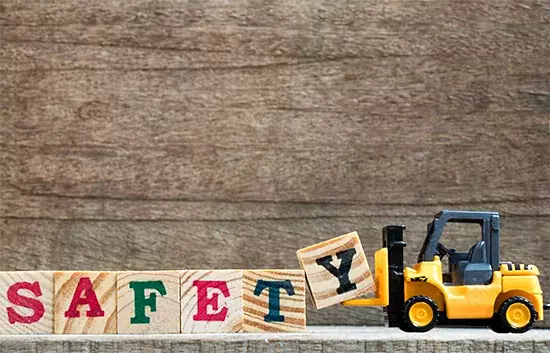 Operating a forklift, or powered industrial truck, is a critical responsibility that requires extensive training, practiced skill, and an unwavering commitment to safety. While basic forklift certification prepares operators for the fundamentals, mastering the art of forklift driving takes experience, attention to detail, and a dedication to continuous improvement.
Operating a forklift, or powered industrial truck, is a critical responsibility that requires extensive training, practiced skill, and an unwavering commitment to safety. While basic forklift certification prepares operators for the fundamentals, mastering the art of forklift driving takes experience, attention to detail, and a dedication to continuous improvement.
In this comprehensive guide, we’ll explore advanced driving techniques and essential safety protocols to help you elevate your forklift operation skills and ensure a secure working environment.
Advanced Forklift Driving Techniques:
1. Load Stabilization: Understanding how to properly distribute and secure loads is crucial for safe maneuvering. Utilize appropriate load stabilization techniques, such as strapping, blocking, and evenly distributing weight to prevent shifting or toppling during transit.
2. Precision Maneuvering: Develop a keen sense of spatial awareness and practice precise maneuvering in tight spaces. Master techniques like spin turns, right-angle stacking, and operating in narrow aisles or congested areas to maximize efficiency and minimize accidents. Learn what is the best forklift for narrow spaces in another one of our articles: ”Small but Mighty: The Rising Need for Compact Lift Trucks”
3. Ramp and Incline Handling: Navigating ramps and inclines requires specific strategies to maintain control and stability. During the certification, you’ll learn proper techniques for ascending and descending slopes, adjusting speed and tilt angle, and positioning the load appropriately to prevent tipping or roll-over incidents.
4. Load Handling Finesse: Smooth and controlled load handling is essential for efficient and safe operations. Master the art of gentle acceleration, deceleration, and braking to minimize load shifting, and develop a keen understanding of load swing dynamics during turns and stops.
5. Terrain Adaptation: Different working environments may present unique challenges, such as uneven surfaces, slippery conditions, or outdoor terrain. Adapt your driving techniques accordingly, adjusting speed, tire pressure, and maneuvering strategies to maintain traction and control.
Are you not sure which truck is best for rough terrain? We have you covered! Discover the top forklift options for rough terrain!
Safety Protocols
Before delving into advanced driving techniques, it’s vital to prioritize safety:
1. Pre-Shift Inspections: Thorough pre-shift inspections are crucial for identifying potential issues before they become hazards. Develop a custom comprehensive checklist and meticulously inspect the forklift’s critical components, including brakes, tires, hydraulics, and safety systems.
2. Personal Protective Equipment (PPE): Ensure that you and your colleagues consistently wear appropriate PPE, such as hard hats, safety glasses, steel-toed boots, and high-visibility clothing, to protect against potential injuries and increase visibility in the work area.
3. Load Handling Best Practices: Follow best practices for load handling, including adhering to weight limits, properly securing loads, and maintaining clear sight lines. Avoid attempting to lift or transport unstable or precariously stacked loads.
4. Traffic Management: Implement effective traffic management protocols to minimize the risk of collisions and ensure smooth operations. Establish designated travel routes, enforce speed limits, and implement clear signaling systems for communicating with pedestrians and other operators.
5. Maintenance and Recordkeeping: Regular maintenance and thorough recordkeeping are essential for ensuring the ongoing safe operation of forklifts. Adhere to recommended maintenance schedules, promptly address any issues or defects, and maintain accurate maintenance logs for future reference.
The journey of forklifts in enhancing workplace safety is a long story. But you can also check our insights on How Forklifts Reduced Injuries for a better understanding of the evolution process, and its impact on reducing workplace injuries over the years.
By mastering advanced driving techniques and embracing strict safety protocols, you can significantly enhance your forklift operation skills, maximize productivity, and cultivate a culture of safety within your workplace.
Continuous training, situational awareness, and a proactive approach to risk mitigation will enable you to navigate even the most challenging environments with confidence and precision.
Interested in advancing your skills or getting a forklift certification? Learn how to do it easily!
